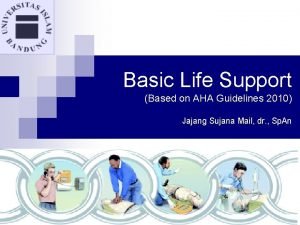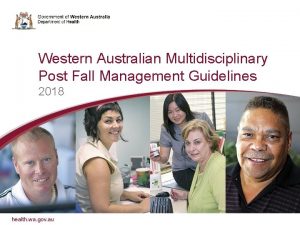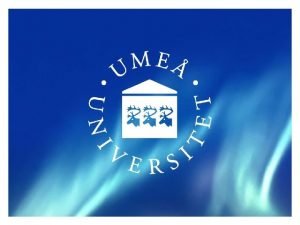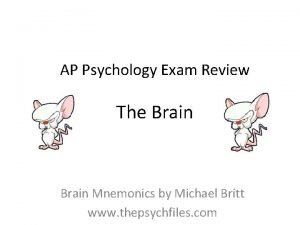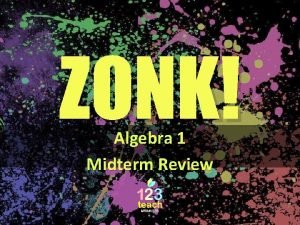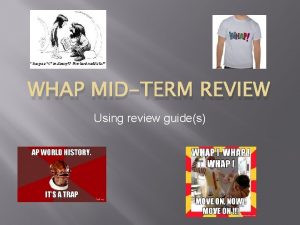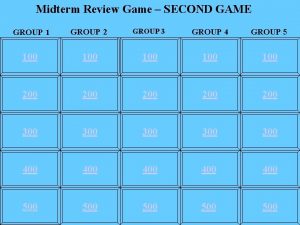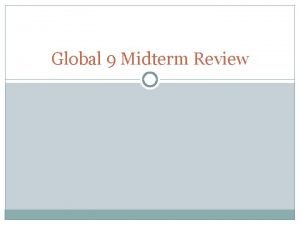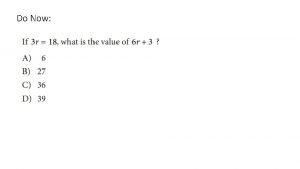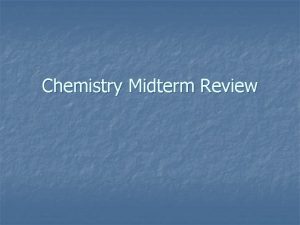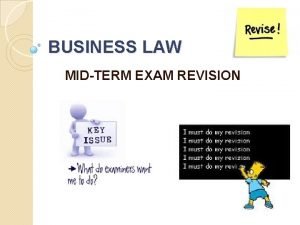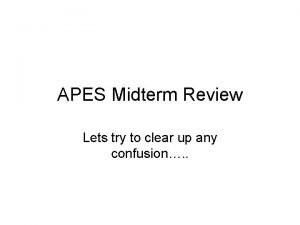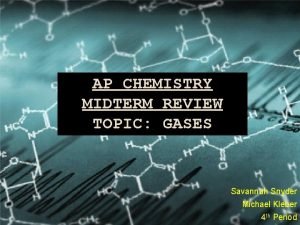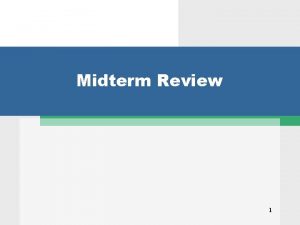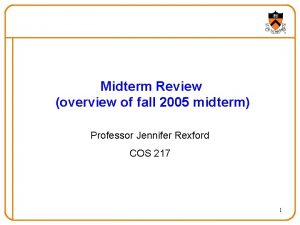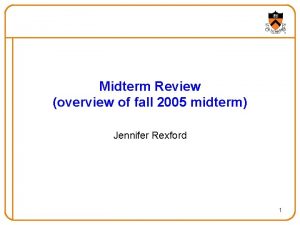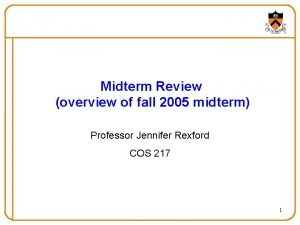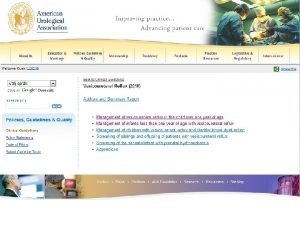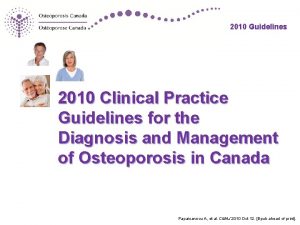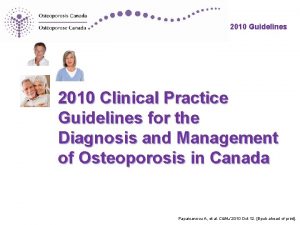Review for Midterm II Fall 2010 Midterm Guidelines








![Sample Primary Source Passages • “I have ventured to bring together various dicta [“sayings”] Sample Primary Source Passages • “I have ventured to bring together various dicta [“sayings”]](https://slidetodoc.com/presentation_image_h2/7c917101b3a57205e160d4aff6fb8258/image-9.jpg)



- Slides: 12

Review for Midterm II Fall 2010

Midterm Guidelines • In-class midterm: http: //faculty. uml. edu/ccarlsmith/teaching/43. 105/midterm 2_guidelines. htm • Take-Home midterm: – http: //faculty. uml. edu/ccarlsmith/teaching/43. 1 05. take_home_2. html

Take-Home Essay • • (1) Based upon the PRIMARY sources that we have read, as well as Judith Bennet’s book about Cecilia Penifader, did men and women live similar lives in the Middle Ages? † To what extent were their respective roles and status in medieval society parallel? What opportunities were available to one gender that were denied to the other? (Hint: remember to consult primary sources as well as Bennett) OR (2) Based upon the PRIMARY sources that we have read, how would you compare medieval with modern university student life, and what factors might account for the differences? † (Hint: do not just rely on the professor's lecture, but look at the primary sources we have read). † OR (3) Based upon the PRIMARY sources that we have read, how would you describe the role(s) of the Catholic Church in the Middle Ages? How did it influence politics, education, daily life, etc. ? (Hint: think about primary sources that describe the Crusades, the Albigensian heresy, the university, etc. as well as relevant chapters from Bennett) OR Based upon the PRIMARY sources that we have read in chapters 5, 7, and 8 of Wiesner, describe how authorial perspective can—either consciously or unconsciously —influence a primary source. That is, how does an author’s background, point of view, office, location, language, etc. influence what s/he writes? Are such considerations more or less evident in medieval sources than in Ancient or Classical primary sources?

In-Class Essay: Sample Questions • The Babylonian Captivity of 14 th c. refers to a. Turkish deportation of Jews to Babylon. b. A decadent period in the history of papal Rome. c. The 68 years of papal residence in Avignon. d. The hundreds of medieval knights captured by Saladin in the 2 nd Crusade.

• • • Just before her death, Cecilia Penifader A. asked her brother Robert, a priest, to give her the last rites; B. gave her lands to three nephews/nieces instead of her sister; C. tried to become a nun; D. none of the above.

• Gothic architecture is all of the following EXCEPT a. A French invention b. Typified by squat buildings with dark interiors. c. Used in Chartes, Canterbury, and other 13 c. Cities that (re)built new cathedrals d. Characterized by soaring interiors filled with light.

• The Carolingian Renaissance occurred under a. b. c. d. Charlemagne Pope Gregory the Great Holy Roman Emperor Leo II King Henry of England

• The “regular” clergy of the Middle Ages a. Included the pope and all bishops b. Usually lived in monasteries c. Were parish priests who administered the sacraments and lived in the parish. d. Were none of the above.
![Sample Primary Source Passages I have ventured to bring together various dicta sayings Sample Primary Source Passages • “I have ventured to bring together various dicta [“sayings”]](https://slidetodoc.com/presentation_image_h2/7c917101b3a57205e160d4aff6fb8258/image-9.jpg)
Sample Primary Source Passages • “I have ventured to bring together various dicta [“sayings”] of the holy fathers, as they came to mind, and to formulate certain questions which were suggested by the seeming contradictions in the statements. The master key of knowledge is, indeed, a persistent and frequent questioning. For example, is God one, or no? Is sin pleasing to God, or no? . . . ” • Peter Abelard, Sic et Non, ca. 1100, written to instruct medieval people in how to use Scholastic philosophy to understand Christian theology. This was very popular in medieval universities.

Hints for Primary Source Passages • Briefly mention 5 Ws • Briefly explain the significance of the passage. • Partial credit is always available. • Watch your time (ca. 15 -18 minutes)

Essay • (1) Identify 2 -4 major attributes that mark the Medieval world (ca. 500 -1400) as distinctly different than the Classical world. – – P. E. R. S. IA. + G. T. Use lecture, textbook, & primary sources for examples Use specific examples whenever possible Intro paragraph always a good idea • (2) The Middle Ages is often described as the "Age of Faith". Is this description accurate? What evidence (events, texts, people, ideas, etc. ) supports this idea? What evidence disproves this idea?

Video Documentary on Middle Ages • The following themes are analyzed in this video: – 1. – 2. – 3. – 4. Rise of Medieval States & Medieval Monarchs - England, France & creation of a state Black Death (bubonic plague) Feudalism - lords, vassals, peasants (laboratores) Manorialism » - subsistence agriculture – 5. – 6. – 7. – 8. Chivalry, Knights, and Crusades - pugnatores Monastic Life - oratores Witchcraft & Medieval Inquisition Scholastic (? ? ) logic….
 Aha guidelines 2010
Aha guidelines 2010 Fall prevention interventions
Fall prevention interventions After the fall 2010
After the fall 2010 Mnemonic for reticular formation
Mnemonic for reticular formation Algebra 1 midterm exam
Algebra 1 midterm exam Whap midterm review
Whap midterm review Cows
Cows Global 9 midterm review
Global 9 midterm review Trig midterm review
Trig midterm review Which substance can be decomposed chemically
Which substance can be decomposed chemically Business law midterm review
Business law midterm review Apes midterm practice test
Apes midterm practice test Ap chemistry midterm review
Ap chemistry midterm review
